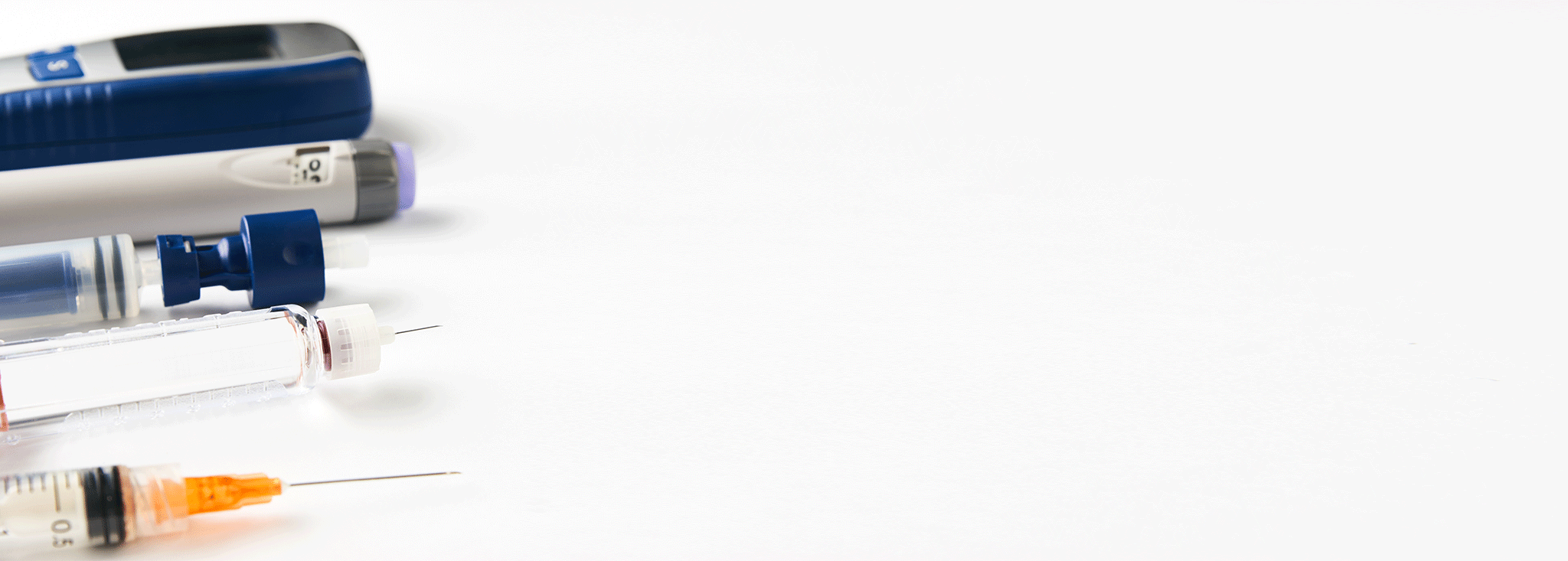The Type 2 Guide to Insulin
Insulin is a hormone produced in the pancreas that regulates the amount of glucose in the blood. Type 2 diabetes is characterized by the body’s resistance to the insulin the pancreas is producing. While those with type 2 diabetes (T2D) can manage their condition by adopting a healthy diet, exercise regimen, strict maintenance of blood glucose levels and medication, many will eventually resort to insulin injections, especially as their condition progresses.
Generally, a person with T2D is recommended to begin insulin injections if their A1C is above 9%. Those with type 2 usually begin absolutely requiring insulin about 10 to 20 years after being diagnosed, though many might make the switch earlier, as it has been documented that insulin injections early on in T2D can possibly induce remission and have other benefits.
In 1921, Frederick Banting and his assistant Charles Best discovered how to remove insulin from a dog’s pancreas. They then used the insulin to save the lives of other animals, and eventually humans suffering from diabetes.
Insulin from cattle and pigs was used for many years, but it caused allergic reactions in many patients. The first synthetic “human” insulin was produced in 1978 utilizing E. coli bacteria in its production. Eli Lilly eventually produced Humulin, the first commercially sold biosynthetic human insulin.
Insulin now comes in many forms, and it is important to know the difference, and to be aware of the various qualities that set them apart.
There are several types of insulin today: Rapid-acting, Short-acting, Intermediate acting, Long-acting, Ultra Long-Acting and Inhaled insulin. They are categorized by how quickly they begin to work in the blood stream and also how long their effects will last.
Rapid-acting insulin
- Taken as a bolus before or during a meal or to correct for high blood glucose
- Takes effect in 15 minutes
- Lasts two to four hours
- Brand names: Apidra (glulisine), Humalog (lispro), Novalog (aspart), Lyumjev (lispro)
Short-acting insulin
- Taken as a bolus before or during a meal or to correct for high blood glucose
- Takes effect in 30 minutes
- Lasts three to six hours
- Brand names: Humulin R, Novolin R
Intermediate-acting insulin
- Usually taken twice a day as a combination bolus and basal insulin
- Takes effect in two to four hours
- Lasts 12 to 18 hours
- Brand names: Humulin N, Novolin N
Long-acting insulin
- Taken once or twice a day as a basal insulin
- Takes effect in two to four hours
- Lasts 24 hours
- Brand names: Lantus (glargine), Levemir (detemir), Basaglar (glargine)
Ultra long-acting insulin
- Taken once a day as a basal insulin
- Takes effect in six hours
- Lasts 36 hours
- Brand names: Toujeo (glargine), Tresiba (degludec)
Inhaled insulin
- Inhaled before or during a meal or to correct for high blood glucose
- Takes effect in 15 minutes
- Lasts three hours
- Brand names: Afrezza





